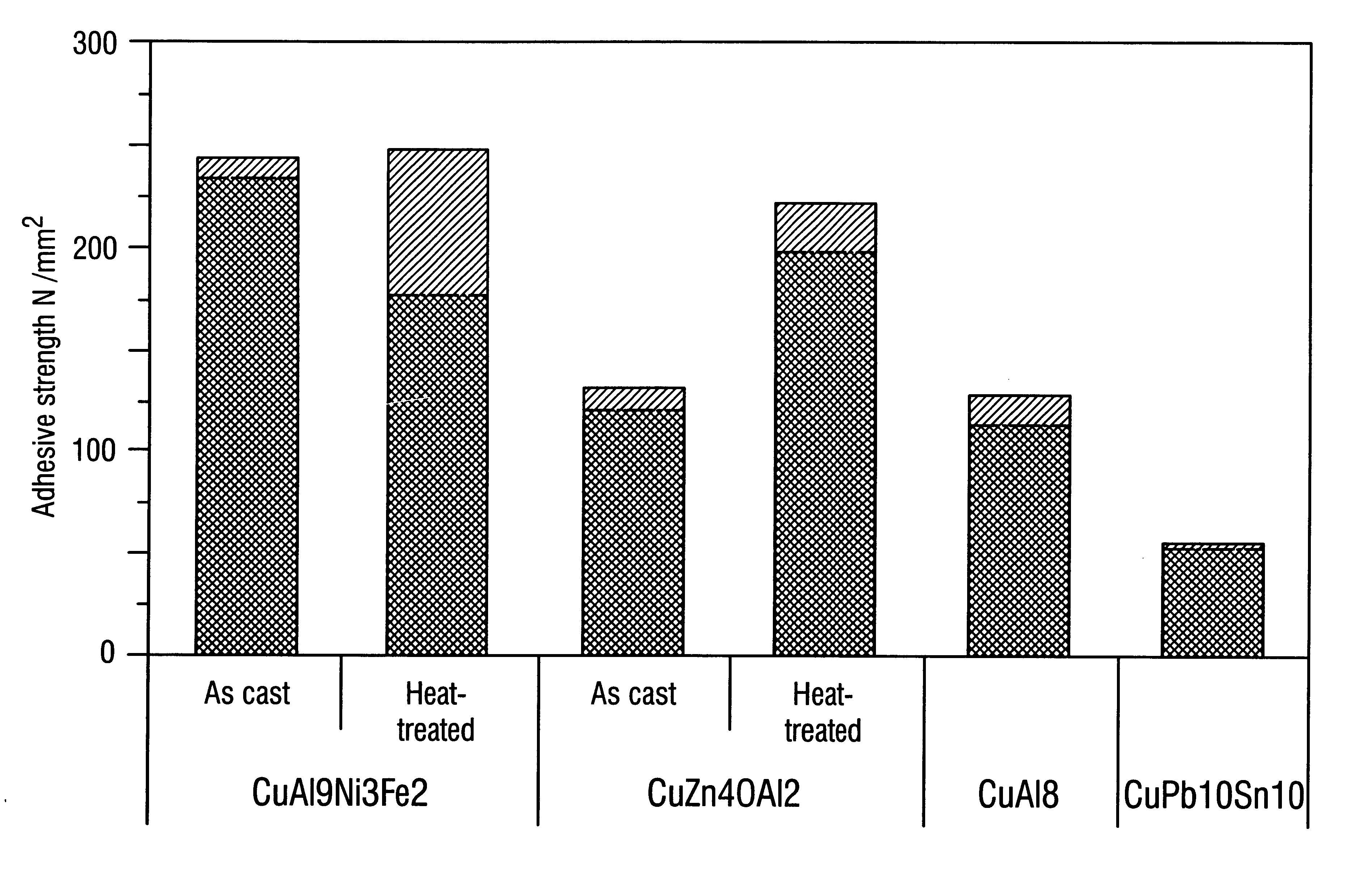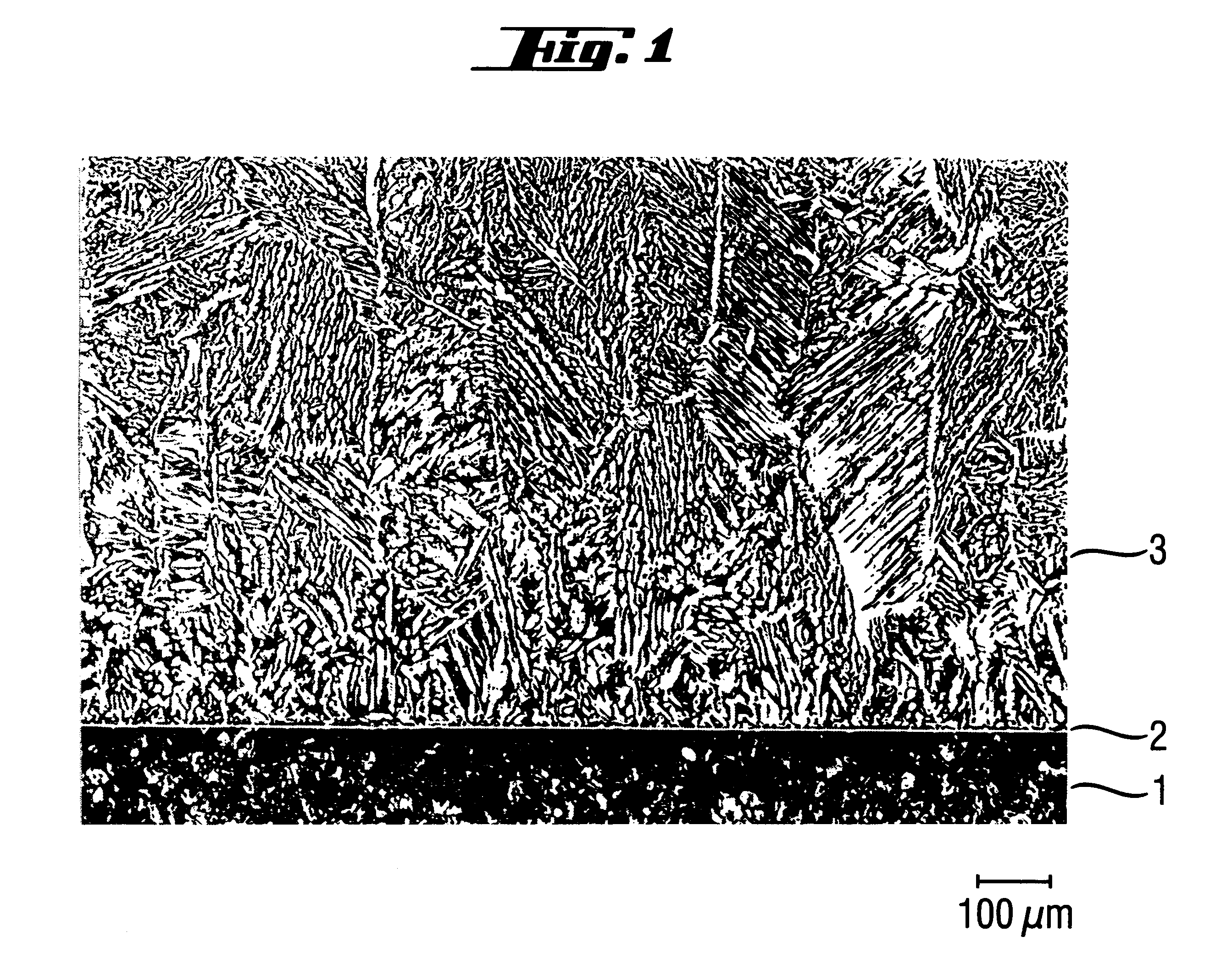Stratified composite material for sliding elements and method for the production thereof
- Summary
- Abstract
- Description
- Claims
- Application Information
AI Technical Summary
Benefits of technology
Problems solved by technology
Method used
Image
Examples
example 1
CuAl9Ni3Fe
A photomicrograph of this composite multilayer material as cast may be seen in FIG. 1. A thin bond zone 2 is present on the steel backing material 1 and consists of 88% iron and 6% copper, the rest consisting of the other alloy constituents.
The bearing alloy 3 is located on the bond zone 2 and comprises a heterogeneous, dendritic structure, wherein the light areas represent the .alpha. phase. The 60 and .beta. phases are present in the bearing alloy 3 in the ratio 2.6.
example 2
CuZn4OAl2
FIGS. 2a and 2b are photomicrographs of the composite multilayer material with the bearing alloy CuZn4OAl2 as cast. Between the steel backing layer 1' and the bearing material 3' there is again a bond zone 2', which comprises 81% iron and 8% copper, the rest consisting of the other alloy constituents.
This material also exhibits a heterogeneous structure.
FIG. 3 shows the bond strength in N / mm.sup.2 for composite materials produced according to exemplary embodiments 1 or 2 compared with conventional composite multilayer materials. The grey area denotes measured value control. Both the cast state and the state after annealing were investigated in relation to CuAl9NiFe2 and CuZn40Al2. It is clear that the two new composite materials are markedly superior to known steel composite materials such as CuAI8 or CuPb10Sn10 with regard to adhesive strength. Heat treatment, carried out to establish the structural composition desired for subsequent forming does not have a negative effect...
PUM
| Property | Measurement | Unit |
|---|---|---|
| Fraction | aaaaa | aaaaa |
| Time | aaaaa | aaaaa |
| Angle | aaaaa | aaaaa |
Abstract
Description
Claims
Application Information
 Login to View More
Login to View More - R&D
- Intellectual Property
- Life Sciences
- Materials
- Tech Scout
- Unparalleled Data Quality
- Higher Quality Content
- 60% Fewer Hallucinations
Browse by: Latest US Patents, China's latest patents, Technical Efficacy Thesaurus, Application Domain, Technology Topic, Popular Technical Reports.
© 2025 PatSnap. All rights reserved.Legal|Privacy policy|Modern Slavery Act Transparency Statement|Sitemap|About US| Contact US: help@patsnap.com


